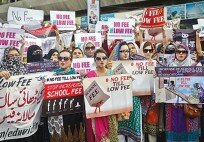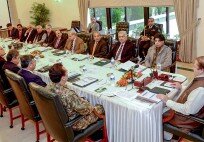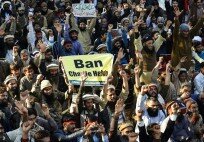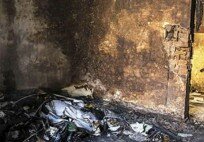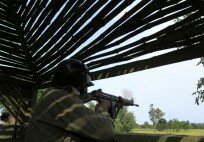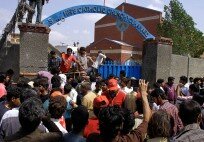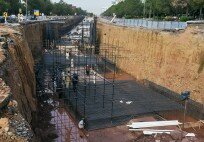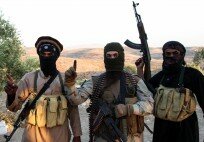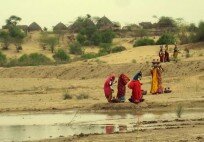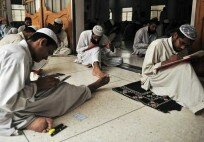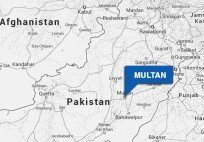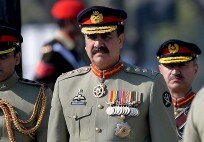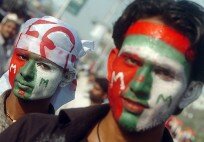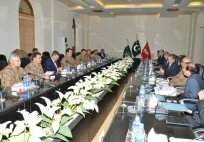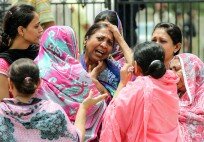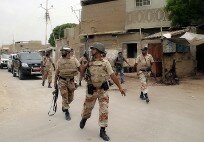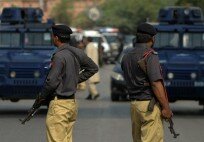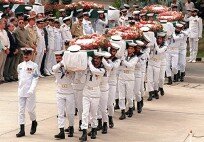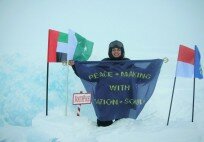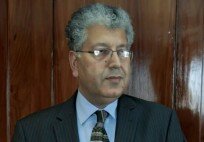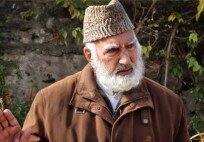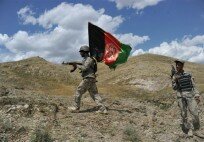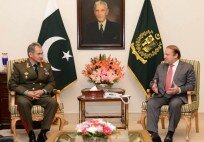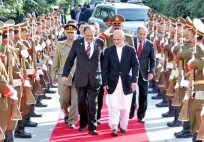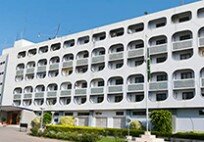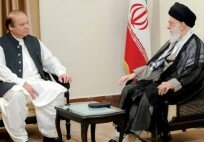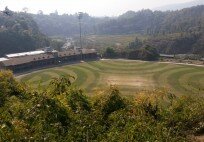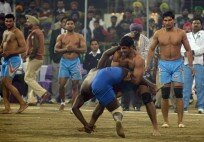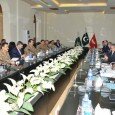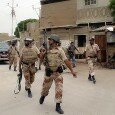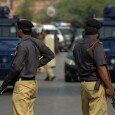Zia ur Rehman:
Be it Swat, Bajaur, Mohmand, Orakzai or Dir – all areas supposedly “cleared” of militants by the army, clearly aren’t
Despite the government’s announcement that its military offensive in the mountainous regions of Swat, Dir, Bajaur and Mohmand areas of northwest Pakistan had succeeded in securing the region, recent subversive attacks by militants of the Tehrik-e-Taliban Pakistan (TTP) have not only belied the military’s claims but have also whipped up fear among local residents. The attacks make it clear that the militants, who had dispersed and fled to Afghanistan and the adjacent tribal areas during the operation, are regrouping and trying to regain a foothold in the region.
Although local tribal elders and military officials agree that the resurgent Taliban are not in a position to regain control in Swat, Dir and other tribal areas, there is a fear that they will restrict their battle to hit-and-run tactics — an ideal approach to guerrilla warfare, one suited to the region’s rugged terrain. After regrouping inside Afghanistan, the TTP, which was on the run a year ago, is now staging well-coordinated and lethal attacks in different parts of FATA.
The most recent reminder of this trend is, of course, the Taliban’s attack on Malala Yousafzai, a 15-year girl who had earned international fame for blogging about the reign of terror in Swat in 2008 and 2009, while she was returning from her school in Mingora, Swat. Malala’s attackers shot her in broad daylight and fled without being caught, although there was a check post in the vicinity.
Although Swat was known, within the country and without, for its scenic beauty, the name became more synonymous with terror for viewing audiences across the world following the emergence of the Taliban, led by Maulana Fazlullah, in the 2008 and 2009 and the subsequent Pakistani military operations in the valley. Bloodshed and atrocities followed, causing the army to launch a military operation named Rah-e-Raast against the militants in April, 2009. The government confidently claimed that militants were wiped out from the valley in a successful military operation.
However, local tribal elders and experts suggest that only the lower cadre of the militants were arrested or killed by the security forces in Swat operation, and that Fazlullah and his key lieutenants, along with a number of armed fighters, managed to flee securely into the Kunar and Nuristan provinces of Afghanistan during the operation. Now they are staging a resurgence by carrying out cross-border attacks in bordering areas of Dir, Bajaur and Mohmand agencies. Militants stage attacks on Pakistani soil and go back to their safe havens inside Afghanistan. In 2011, security in the border areas remained volatile, with 69 reported clashes and cross-border attacks, which killed 225 people, according to Pakistan Security report 2011, prepared by Pak Institute for Peace Studies (PIPS), an Islamabad-based think-tank. Pakistani military commander Major General Ghulam Qamar asserted that since February 2012, there have been 17 major cross-border incursions where Pakistani Taliban fighters entered Pakistan from Afghanistan to attack Pakistani interests.
Security officials and local tribal elders suggest that cross-border attacks in Pakistani territory have been carried out by the militants belonging to Swat, Dir and Bajaur chapters of TTP with help from Afghan militants. Sirajuddin, spokesperson for the TTP’s chapter for the Malakand division, said that Fazlullah is leading the militants’ attacks from Afghanistan’s border provinces and is in touch with fighters in the Malakand division. He claimed that Fazlullah is commanding over a thousand diehard fighters who regularly move across the porous border.
Police officials in Swat say the attack on Malala was carried out by the militants loyal to Mullah Fazlullah. Law-enforcement agencies in Swat have arrested several suspects, but the mastermind of the attack – identified as Ataullah, a resident of Sangota area, is said to have fled to Afghanistan. Sources in the police say that the suspects were aged between 20 and 30 and were not involved in militancy at the time when the Fazlullah-led militants held sway in Swat.
“Political elders and leaders of anti-Taliban peace committees of Swat are key targets of the Taliban because they played an important role assisting law enforcement agencies in the operation against the militants,” said Saifullah Khan, a leader of Nekpikhel Qaumi Jirga, an anti-Taliban armed volunteer force formed in Kabal tehsil.
Five prominent anti-Taliban figures like Malala have been attacked in the last six months. Afzal Khan Damghar, a prominent political leader, was shot dead by an unidentified gunman on July 12. Damghar, a hotel owner associated with Pakistan Muslim League-Nawaz, had played a key role in maintaining peace in the valley. Alhaj Zahid Khan, a leader of Swat Qaumi Jirga (SQJ) and president of All Swat Hotels Association, was injured in an assassination bid on August 3 while he was on his way to a mosque for evening prayers. Separate attacks in Swat also injured peace activists Idrees Khan of Bara Bandai and Muftaiuddin of Kanju.
“Anyone who takes side with the government against us will have to die at our hands. You will see. Other important people will be our target soon,” TTP Swat’s spokesman Sirajuddin told reporters. He said Damghar was his close relative, but he had ordered his killing because he was against the Taliban.
Despite Pakistan’s announcement that the military offensive had succeeded and the area was secure, recent attacks by militants of the TTP have whipped up fear among local residents.
A major reason for the increase in such attacks was that the local administration was not effective, said Sardar Ahmed Yousafzai, a Swat-based analyst. “The security forces carried out an operation and cleared the area from the militants. Now it is the responsibility of the civil administration and police to have an effective law-enforcement and intelligence network in the valley at the level of villages,” said Sardar.
A former princely state until its incorporation into Pakistan in 1969, and now divided into two districts, of Lower Dir and Upper Dir of the Khyber Pakhtoonkhwa province, Dir borders Swat, the Bajaur Agency, the Chitral district and Afghanistan. Except for the small Dogh Darra area, Dir remained largely undisturbed in recent years, even as militant activities in the region increased. However, the Taliban militants continued their subversive activities and gained momentum during April 2008 . Dir has also remained a strong base for the Tehrik-e-Nifaz-e-Shariat-e-Muhammadi (TNSM). The hometown of TNSM founder Maulana Sufi Muhammad is in Dir. Security analysts say that Dir had become a hub of militancy when hundreds of militants fled from neighboring Bajaur and Mohmand Agencies to Dir because of on-going military operations in the tribal areas.
The militants of Dir are led by Hafizullah Kochwan, who hails from Nihag Darra in Upper Dir. But sources among the TTP say that Qari Abdul Jabbar from Timergara is emerging as a new leader. Jabbar headed a small group of around 400 militants chased out of Malakand during the military operation.
In early 2009, Taliban from neighboring Swat started asserting their authority in the Dir area, leading the military to launch an operation against the militants in April 2009. The then Operational commander Colonel Nadeem Mirza declared , in April 2010, the entire area of Dir clear of militants following the operation.
The Dir region has been the target of several such cross-border attacks. The June 24 raid was the most brazen of such attacks when scores of militants based in Afghanistan’s Kunar province crossed the border into Upper Dir and attacked a group of Pakistani soldiers on patrol. Three days later, they released a videotape showing severed heads of 17 of them.The videotape, prepared by Omar Studio, the Taliban’s media wing, includes a statement by Hakimullah Mehsud, TTP Central chief and Maulana Fazlullah.
Also, the Taliban have started targeting “pro-government” elders and police since the beginning of 2011 – ¬sending not only shockwaves throughout the population of Dir but also belying the military’s claims of clearing the area of the militants.
Bajaur Agency remained the major source of concern for security forces during the month of September. In August, militants of TTP intruded from across the border into Tehsil Slarzai of the agency, which borders with Kunar province of Afghanistan. They captured some mountains of strategic importance in Batawar area and inflicted heavy losses to security forces. Pakistani military launched a military operation, backed by local tribal elders, in rooting out the militants which was continued for 17 days.
“We completely eliminated extremist elements and the writ of the government has been re-established in the area,” Security forces Sector Commander North, Brigadier Haidar, talking to journalists on Oct 19, said, adding that the Bajaur agency was now firmly under the control of security forces with units deployed in every corner of the district.
From the beginning, Bajauri militants were led by Maulvi Faqir Muhammad, a notorious Pakistani militant commander, who also remained a deputy of Baitullah Mehsud, the first slain head of TTP. However, TTP chief Hakimullah Mehsud sacked Faqir Muhammad in December for his brokering a ceasefire with the military, and appointed Dadullah as the new Bajaur chief of TTP. Dadullah, whose real name was Jamal Said, had a close association with senior members of Al Qaeda from 2003 to 2007. He was the chief of TTP’s moral police and in-charge of the Taliban’s treasury. On August 24, Dadullah, along with his several fighters, was killed in a NATO airstrike in the Chawgam area of Shigal district of Kunar province. Maulvi Abu Bakar was then appointed the acting chief of TTP Bajaur.
Mohmand Agency remained relatively peaceful, although a few incidents of target killings, IED blasts and schools blowing up occurred in recent months.
Indigenous Taliban emerged as a major social force in the Mohmand Agency in 2006, when armed militants began patrolling the district and ordering residents to follow the social codes they imposed. The militants of Mohmand are led by Omar Khalid, whose real name is Abdul Wali.
Rising incidents of atrocities and attacks on governmental officials and installations compelled Pakistani security forces to launch operations against the Taliban in Mohmand in October, 2008. By September 2009, Pakistani security forces claimed to have cleared 80 percent of Mohmand of insurgents, the exceptions being militant strongholds near the Afghan border. However, many in Mohmand Agency believe that the Taliban have not been defeated and they are still active in bordering areas.
Experts believe that the militants belonging to Swat, Dir, Bajaur and Mohmand are hiding in Afghanistan’s Kunar and Nuristan provinces. “Fazlullah is leading the attacks from Afghanistan’s border provinces and is in touch with fighters in the Malakand division,” Sirajuddin, the spokesman for TTP’s Malakand chapter, told local reporters over the phone. “We move across the porous border regularly,” he added. This acknowledgment gives credence to Islamabad’s claims that the TTP has found safe havens in Afghanistan’s eastern provinces bordering Pakistan.
Media reports suggest that Qari Ziaur Rehman, a key commander of Al Qaeda who hails from Kunar, and Sheikh Dost Muhammad, a Nuristan-based local Afghan Taliban leader, are hosting and helping the Pakistani militants in Afghanistan’s bordering areas. Rehman is believed to be once a close confidante of al Qaeda chief Osama bin Laden and even hosted him once after his epic escape from the Tora Bora mountains in 2001 and there is no evidence of Rehman’s group defying the authority of Mullah Omar, head of Afghan Taliban.
On the hand, the Afghan Taliban have repeatedly denied any involvement in attacks in Pakistani territory. “The Afghan Taliban insurgents limit their operations to Afghanistan and never launched attacks in Pakistan or any other country,” Afghan Taliban spokesman Zabihullah Mujahid told the Afghan media.
Recent cross-border attacks in the bordering areas also suggest that the militants belonging to Bajaur, Swat and Dir are not regrouping but also adopting a new strategy of large-scale attacks on Pakistani security forces. The TTP’s reappearance in bordering areas also indicates that the TTP used its eviction as an opportunity to regroup and recruit new fighters. Instead of weakening the militants, the army operation seems to have shifted the hub of militancy from settled areas of Swat and Dir and tribal area of Bajaur to the border areas.
Experts believe that there are no sign that the militants will be able to penetrate deep inside Swat or Bajaur. They will continue the hit-and-run tactics, an ideal guerrilla-warfare approach in the rocky terrain, usually arrive in a big wave, attack and retreat back in Afghanistan. “The TTP aim is to carry out these cross-border attacks, which do not just take a toll in terms of casualties, but also have a psychological impact,” said Aqeel Yousafzai, a security analyst and author. He thinks the militants (through cross-border attacks) reinforce the fear of the Taliban in the local population and serve as a reminder of what could happen to them were they to help the government and the army.
Some analysts believe violence on both sides of the border is a joint strategy of al Qaeda, the TTP and Afghan Taliban to hurt ties between Islamabad, Kabul and Washington to increase mutual mistrust.
Jan Assakzai, a London-based expert who monitors militancy in Afghanistan and Pakistan very closely, says that there are all shades of militants, including Afghan and Pakistani Taliban and Al Qaeda, operating in Nuristan and some parts of Kunar. Former Afghan defense minister Shah Nawaz Tanai opined that Taliban elements in both countries helped each other during the 10-year resistance against the former Soviet forces and the same cooperation is continuing today.
The TTP’s use of safe havens in Afghanistan mirrors the Afghan Taliban’s successful use of safe havens in Pakistan. Analysts believe that though the two groups are believed to be helping each other but they fight only for themselves. No Afghan Taliban groups are reported to be taking part in the recent cross-border attacks. For example, with help of Pakistani militants, Nuristani Taliban kidnapped a Greek social worker, Athanassios Lerunis, from Pakistani Chitral district in Sep 2009 and shifted him to Nuristan. Lerunis was reportedly released in April 2010 in exchange of three key Afghan Taliban commanders, Maulana Rahmatuddin Nuristani, Ustad Yasir and Maulvi Abdullah Akhund.
Some experts think that the recent rise in cross-border attacks is a part of joint strategy to stop a possible military operation against Haqqani Network. Raees Ahmed, a security analyst, is of view that the TTP has recently stepped up attacks in Bajaur agency in response to the impending army operation in North Waziristan. The alliance between the leadership of Al Qaeda, the TTP, Afghan Taliban and other national and transnational militant groups might be looking for a new but familiar safe haven in bordering area of Malakand division and Bajaur before starting a military offensive in North Waziristan, experts opine.
The writer is a journalist and researcher and covers militancy in Pakistan. Email : [email protected]


